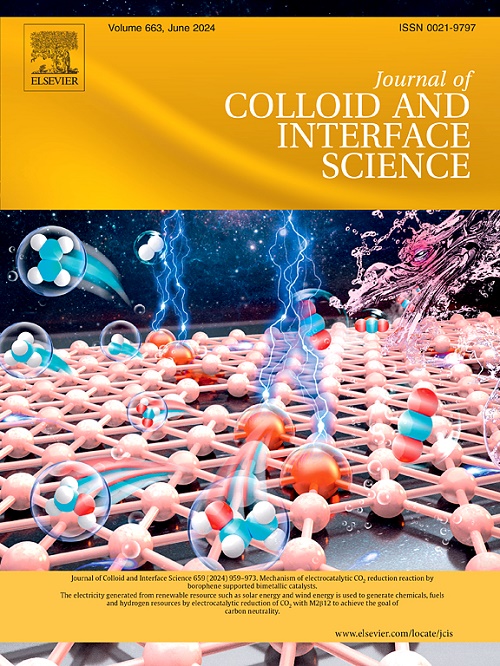Conductive hydrophobic graphene oxide films via laser-scribed surface modification
IF 9.4
1区 化学
Q1 CHEMISTRY, PHYSICAL
引用次数: 0
Abstract
Graphene oxide (GO) can be surface modified for various purposes, including enhancing its properties or tailoring its behaviour for specific applications such as biosensing. Herein we report the behaviour of a carboxylate functionalized graphene oxide that is both water repellent and electrically conductive. The GO is first produced using a modified Hummers method and then functionalized with a hyperbranched isostearic alcohol through an esterification reaction. The as-deposited functionalized GO films were observed to cause “petal-like” wetting of water, whereby droplets exhibited contact angles (CAs) greater than 150° and remaining pinned to the surface. To improve their conductivity, films of the functionalized GO deposited onto glass were laser-scribed to reduce some of the specific, adjoining regions of oxidic carbon to partially restore some of the sp2 C network. This improved the conductivity of the as-deposited GO films by approximately four orders of magnitude from 0.002 to ∼20 S/m using the low laser scan speed of 250 mm/min. It was observed that with a high laser scan speed of 500 mm/min some of the hydrophobic character was retained (CAs ∼110°), whilst maintaining conductivities of up to 0.17 S/m. Consequently, these materials show promise for applications such as biosensing materials, where tuneable hydrophobicity combined with conductivity are required characteristics.

求助全文
约1分钟内获得全文
求助全文
来源期刊
CiteScore
16.10
自引率
7.10%
发文量
2568
审稿时长
2 months
期刊介绍:
The Journal of Colloid and Interface Science publishes original research findings on the fundamental principles of colloid and interface science, as well as innovative applications in various fields. The criteria for publication include impact, quality, novelty, and originality.
Emphasis:
The journal emphasizes fundamental scientific innovation within the following categories:
A.Colloidal Materials and Nanomaterials
B.Soft Colloidal and Self-Assembly Systems
C.Adsorption, Catalysis, and Electrochemistry
D.Interfacial Processes, Capillarity, and Wetting
E.Biomaterials and Nanomedicine
F.Energy Conversion and Storage, and Environmental Technologies

 求助内容:
求助内容: 应助结果提醒方式:
应助结果提醒方式:


